
CLINICAL PHARMACOKINETICS
Scope & Guideline
Transforming Pharmacological Research into Practice
Introduction
Aims and Scopes
- Population Pharmacokinetics and Pharmacodynamics:
The journal extensively covers population pharmacokinetics, emphasizing the importance of understanding how drugs behave in diverse populations, including pediatric, geriatric, and those with varying comorbidities. - Pharmacometric Modeling:
A significant focus is on the application of pharmacometric modeling techniques, such as physiologically-based pharmacokinetic (PBPK) modeling, to predict drug behavior and inform dosing regimens. - Therapeutic Drug Monitoring (TDM):
The journal frequently addresses the role of TDM in optimizing drug therapies, particularly in populations with altered pharmacokinetics, such as those with renal or hepatic impairments. - Drug-Drug Interactions:
Research on potential drug-drug interactions and their clinical implications is a core area, helping clinicians understand how concurrent medications can affect pharmacokinetic profiles. - Precision Medicine:
The journal emphasizes the integration of pharmacogenetics and pharmacogenomics in precision medicine, aiming to tailor drug therapies based on individual genetic profiles and metabolic capacities.
Trending and Emerging
- Machine Learning and Artificial Intelligence Applications:
There is a growing trend in utilizing machine learning and artificial intelligence for predictive modeling and dosage optimization, aiming to enhance individualized patient care. - Physiologically-Based Pharmacokinetic Modeling:
Increasing emphasis is placed on physiologically-based pharmacokinetic (PBPK) modeling, which allows for more accurate predictions of drug behavior in various populations, including special populations such as pediatrics, geriatrics, and those with comorbidities. - Focus on Special Populations:
Emerging research is increasingly targeting pharmacokinetics in special populations, including pregnant women, neonates, and patients with specific diseases, reflecting a need for tailored therapeutic approaches. - Integration of Pharmacogenomics:
There is a notable trend towards integrating pharmacogenomic data into clinical pharmacokinetics, facilitating personalized medicine and improved therapeutic outcomes. - Real-World Evidence and Clinical Applications:
The journal is seeing more studies that leverage real-world evidence to inform pharmacokinetic modeling and dosing strategies, bridging the gap between research and clinical practice.
Declining or Waning
- Basic Pharmacokinetic Studies:
There has been a noticeable decline in the publication of basic pharmacokinetic studies that do not directly translate to clinical applications or patient management. - Traditional Drug Interaction Studies:
Research focusing solely on traditional drug-drug interaction studies without the incorporation of advanced modeling or real-world data has decreased, as the field moves toward more integrated and comprehensive approaches. - Single Drug Studies:
There is a waning interest in studies examining the pharmacokinetics of single drugs in isolation, with a shift towards evaluating drugs in combination therapies and their interactions.
Similar Journals
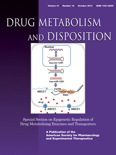
DRUG METABOLISM AND DISPOSITION
Exploring the Frontiers of PharmacologyDrug Metabolism and Disposition is a premier journal published by the American Society for Pharmacology and Experimental Therapeutics, focusing on crucial advancements in the fields of pharmaceutical sciences and pharmacology. Since its inception in 1973, this esteemed journal has established itself as a leading platform for innovative research, earning a prestigious Q1 rating in both Pharmaceutical Science and Pharmacology categories as of 2023. With an impressive Scopus ranking of #52 out of 183 in Pharmaceutical Science and #105 out of 313 in Pharmacology, it occupies a vital place in an increasingly competitive academic landscape. Researchers, professionals, and students alike benefit from its rigorous peer-reviewed articles that delve into drug metabolism processes and their physiological implications, making it an indispensable resource for anyone aiming to advance their understanding of drug disposition and efficacy. This crucial journal contributes significantly to the ongoing dialogue in pharmacology and toxicology, providing insights that help shape future therapeutic strategies and regulatory policies.
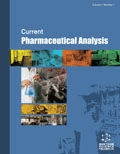
Current Pharmaceutical Analysis
Fostering Collaboration in Pharmaceutical InnovationCurrent Pharmaceutical Analysis, published by Bentham Science Publishers Ltd, is a vital resource for professionals and researchers in the fields of Pharmaceutical Science, Biochemistry, and Molecular Medicine. Established in 2006, this peer-reviewed journal aims to provide a platform for the latest advancements and analytical methodologies in pharmaceutical research and drug development. Over the years, it has garnered attention for its rigorous scrutiny and contributions to the landscape of pharmacology, evidenced by its quartile placements in various categories, most notably Q3 in Pharmaceutical Science. Despite its current rankings placing it in the lower quartile in several disciplines, the journal remains an essential venue for both emerging and established researchers seeking to disseminate their findings. With the widespread accessibility of its articles, researchers, professionals, and students can engage with cutting-edge studies to foster innovation in pharmaceutical analysis. For access to the latest research contributions, readers can explore the digital archive and stay updated on pivotal discussions shaping the future of the pharmaceutical sciences.
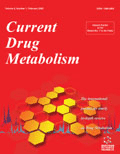
CURRENT DRUG METABOLISM
Pioneering Insights for Clinical BiochemistryCURRENT DRUG METABOLISM, published by Bentham Science Publishers Ltd, serves as a pivotal resource in the fields of Clinical Biochemistry and Pharmacology. With an ISSN of 1389-2002 and an E-ISSN of 1875-5453, this journal has carved a niche since its inception in 2000, offering in-depth research and reviews that bridge the gap between drug metabolism and its clinical applications. The journal finds itself positioned in the third quartile (Q3) for both Clinical Biochemistry and Pharmacology as of 2023, reflecting its significance within these scientific sectors, with Scopus rankings showcasing its role in advancing knowledge—rank #167 in Pharmacology and #66 in Clinical Biochemistry. Researchers and industry professionals are encouraged to contribute their findings, fostering a diverse platform that informs and inspires innovations in drug development and safety. While CURRENT DRUG METABOLISM operates under a traditional subscription model without open access, its rigorous peer-review process ensures the quality and integrity of the published work, making it indispensable for anyone engaged in drug research and biochemistry.
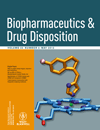
BIOPHARMACEUTICS & DRUG DISPOSITION
Bridging Knowledge Gaps in Drug DevelopmentBIOPHARMACEUTICS & DRUG DISPOSITION, published by WILEY, is a prominent journal in the fields of biopharmaceutics and pharmacology, dedicated to the dissemination of vital research that spans from the foundational aspects of drug disposition to advanced therapeutic developments. Since its inception in 1979, this journal has established itself as a crucial resource for a diverse audience, including researchers, professionals, and students. With its impact factor indicating solid performance and a current ranking in Q2 for Pharmaceutical Science and Q3 across miscellaneous medicine categories, BIOPHARMACEUTICS & DRUG DISPOSITION serves as a nexus for innovative studies and breakthrough findings. The journal's comprehensive scope ensures that rigorous scientific inquiry is represented, helping to advance the understanding of drug behavior in biological systems. Participating in this scholarly dialogue not only enhances individual knowledge but contributes to the broader pharmaceutical and medical communities, making it an essential publication for all stakeholders interested in drug development and utilization.
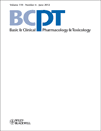
BASIC & CLINICAL PHARMACOLOGY & TOXICOLOGY
Exploring Innovations in Drug Action and SafetyBASIC & CLINICAL PHARMACOLOGY & TOXICOLOGY, published by WILEY, serves as a vital resource in the fields of medicine, pharmacology, and toxicology. With an ISSN of 1742-7835 and E-ISSN 1742-7843, this journal has established a robust reputation, reflected in its Q2 classification across its categories in 2023. It aims to disseminate high-quality research and reviews that bridge the gap between basic scientific findings and clinical applications. Operating from the United States with an address at 111 RIVER ST, HOBOKEN 07030-5774, NJ, this journal focuses on the intersection of drug action and toxicity, making it an essential platform for researchers, healthcare professionals, and students. With a converged publication timeline from 2004 to 2024, BASIC & CLINICAL PHARMACOLOGY & TOXICOLOGY continues to make significant contributions to understanding pharmacological treatments and toxicological challenges. Open access options are available to broaden the reach and impact of its published work.

Expert Review of Clinical Pharmacology
Exploring the frontiers of pharmacology for enhanced clinical practice.Expert Review of Clinical Pharmacology, published by TAYLOR & FRANCIS LTD, is a leading peer-reviewed journal dedicated to the field of clinical pharmacology, with a strong focus on the development and application of pharmacological therapies in patient care. Boasting an impressive impact, the journal ranks in the first quartile across multiple categories including Medicine (miscellaneous), Pharmacology (medical), and Pharmacology, Toxicology and Pharmaceutics (miscellaneous), reflecting its influential position within the scientific community. With a Scopus ranking of #6 in General Pharmacology, Toxicology and Pharmaceutics, the journal also achieves a commendable 93rd percentile, further emphasizing its importance as a resource for researchers and clinicians alike. As it continues to publish innovative reviews and research articles from 2008 until 2024, the Expert Review of Clinical Pharmacology plays an essential role in advancing knowledge, improving clinical practice, and fostering collaboration among experts in pharmacology, thereby driving forward the field's evolution towards better patient outcomes.
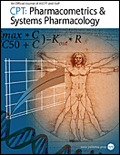
CPT-Pharmacometrics & Systems Pharmacology
Exploring the future of drug development and patient safety.CPT-Pharmacometrics & Systems Pharmacology, published by WILEY, is a leading open access journal dedicated to advancing the fields of pharmacometrics and systems pharmacology. Since its inception in 2012, it has established itself as a vital resource for researchers and practitioners, boasting a remarkable impact factor and occupying prestigious Q1 quartiles in categories such as Cardiology and Cardiovascular Medicine, Modeling and Simulation, and Pharmacology (Medical). The journal covers a broad spectrum of topics aimed at enhancing the understanding of drug development, efficacy, and patient safety through innovative modeling and simulation approaches. With its consistent ranking in the top tiers of its field, CPT-Pharmacometrics & Systems Pharmacology provides invaluable insights and fosters scholarly dialogue among its audience, including researchers, educators, and students. The journal is accessible to all, promoting knowledge dissemination and collaborative growth in the pharmacology community.

Clinical Pharmacology in Drug Development
Advancing pharmaceutical science for a healthier tomorrow.Clinical Pharmacology in Drug Development, published by WILEY, is a distinguished journal dedicated to advancing the field of pharmaceutical science and drug development. With a strong commitment to disseminating cutting-edge research, this journal serves as a crucial platform for professionals, researchers, and students aiming to enhance their understanding of pharmacological principles and innovations in medical therapeutics. Since its inception in 2012, the journal has consistently maintained a noteworthy presence in the academic community, currently achieving a Q2 ranking in both Pharmaceutical Science and Medical Pharmacology categories as of 2023. Although the journal operates under a subscription model, it is highly regarded for its rigorous peer-reviewed publications, offering insights into drug efficacy, safety, and regulatory challenges. Positioned at the intersection of clinical practices and pharmaceutical advancements, Clinical Pharmacology in Drug Development plays an essential role in bridging the gap between scientific research and real-world application, ensuring that the latest therapeutic strategies are optimized for patient care.
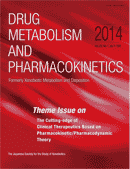
Drug Metabolism and Pharmacokinetics
Advancing the Frontiers of Drug Metabolism and PharmacokineticsDrug Metabolism and Pharmacokinetics is a premier academic journal committed to advancing the understanding of drug metabolism processes and pharmacokinetic principles critical to the development of therapeutics. Published by the Japanese Society for the Study of Xenobiotics, this journal has established itself as a vital resource within Pharmaceutical Science and Pharmacology, achieving a respectable Q2 ranking in the latest 2023 metrics. Spanning from 2002 to 2024, the journal publishes original research articles, reviews, and insights that address contemporary issues in xenobiotic metabolism and pharmacologic practices. With its ISSN of 1347-4367 and E-ISSN of 1880-0920, Drug Metabolism and Pharmacokinetics is indexed in leading databases, enhancing its visibility and accessibility for researchers, professionals, and students alike. By fostering a rigorous scientific dialogue, the journal plays an essential role in shaping the future of pharmacology and pharmaceutical sciences.
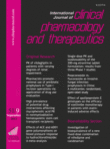
INTERNATIONAL JOURNAL OF CLINICAL PHARMACOLOGY AND THERAPEUTICS
Connecting researchers and practitioners in pharmacology.INTERNATIONAL JOURNAL OF CLINICAL PHARMACOLOGY AND THERAPEUTICS, published by DUSTRI-VERLAG DR KARL FEISTLE in Germany, is a vital scholarly platform dedicated to advancing the field of pharmacology through rigorous research and innovative therapeutic strategies. Established in 1994, this journal has maintained its relevance in the evolving landscape of clinical pharmacology, achieving a Q3 rank in both general and medical pharmacology categories as of 2023. With an ISSN of 0946-1965, it is positioned as an essential resource for researchers, healthcare professionals, and students seeking to enhance their understanding of drug therapy and pharmacological applications. Though it currently does not offer open access, its comprehensive scope covers a wide array of topics within pharmacology, promising to contribute significantly to scientific discussions and knowledge dissemination from 1994 to 2024. Whether you are looking for the latest studies or historical insights, the journal remains a fixture for anyone invested in the pharmacological sciences.